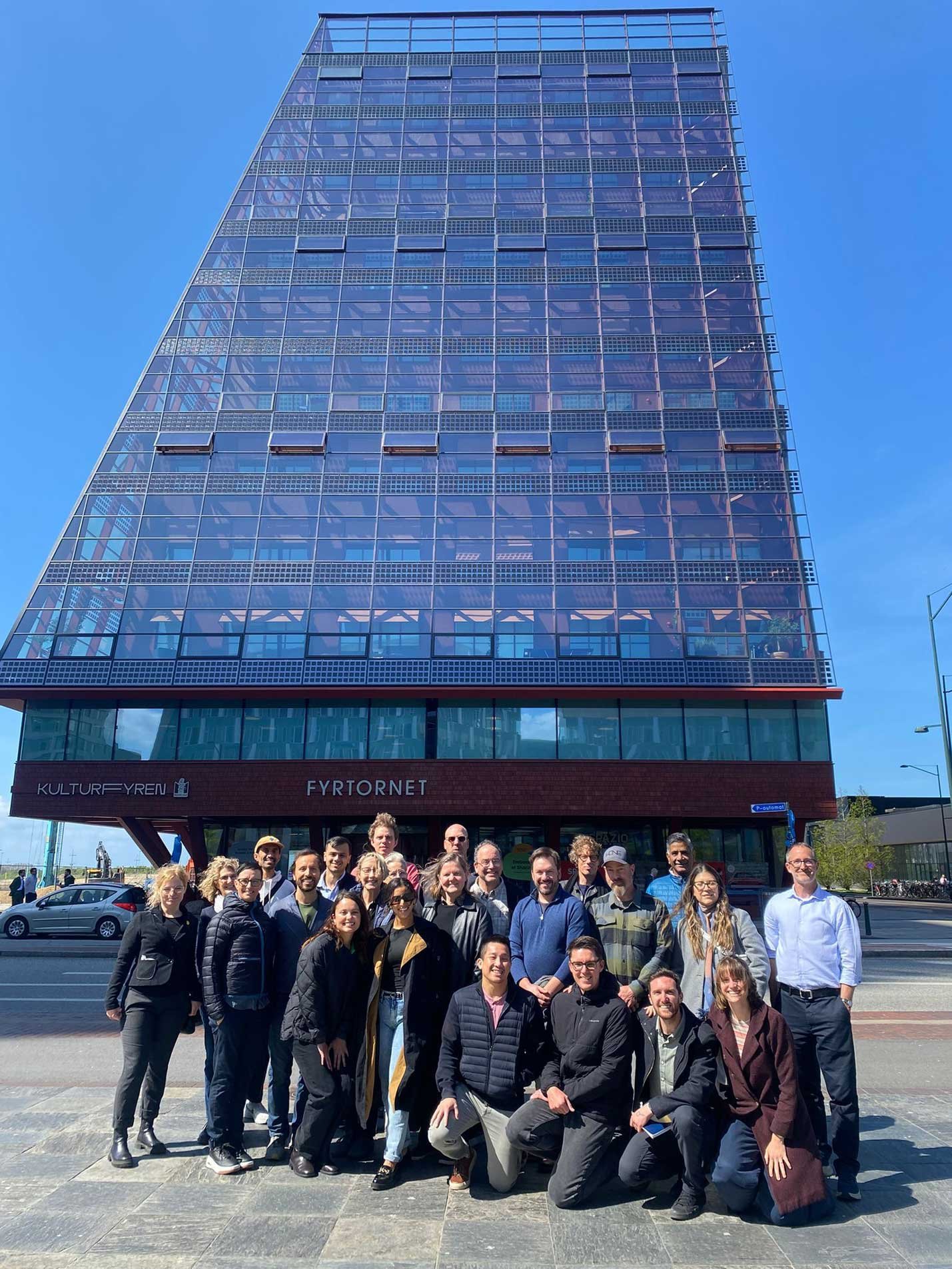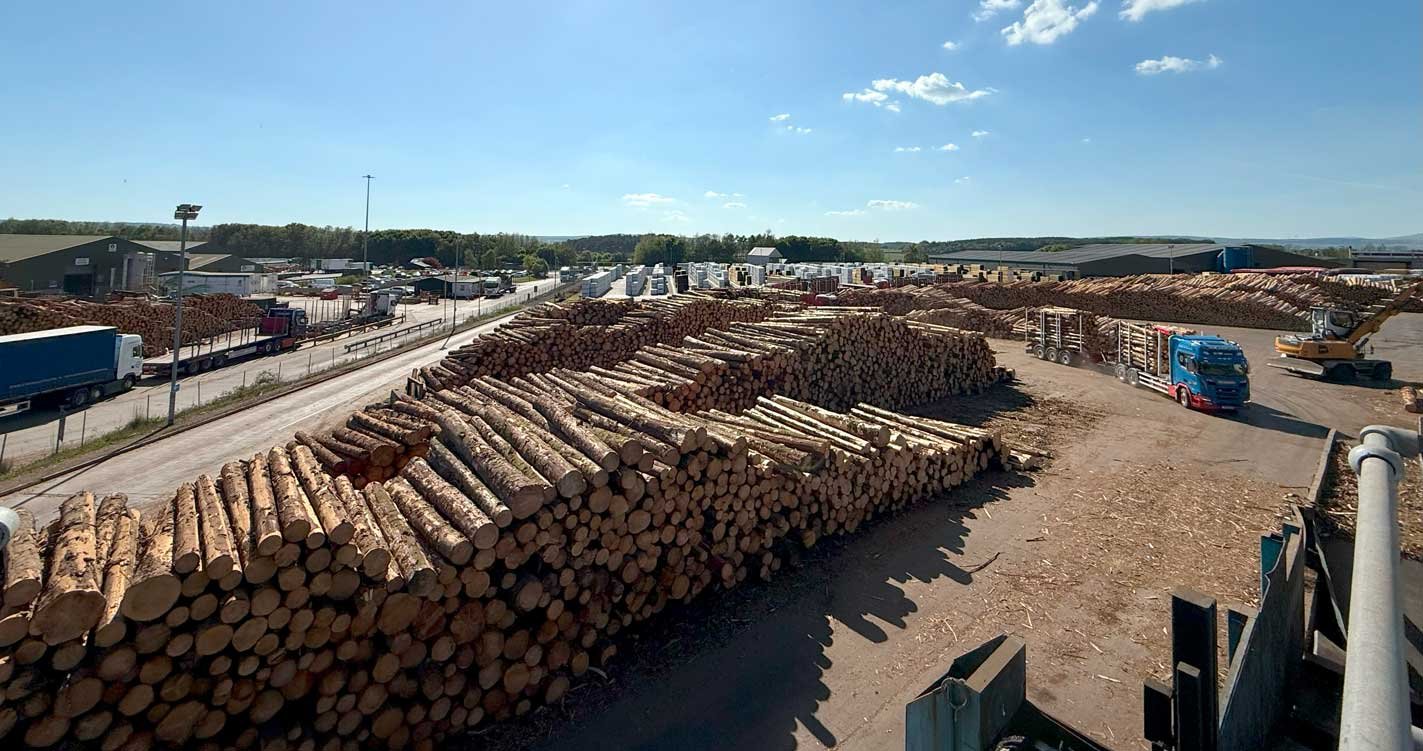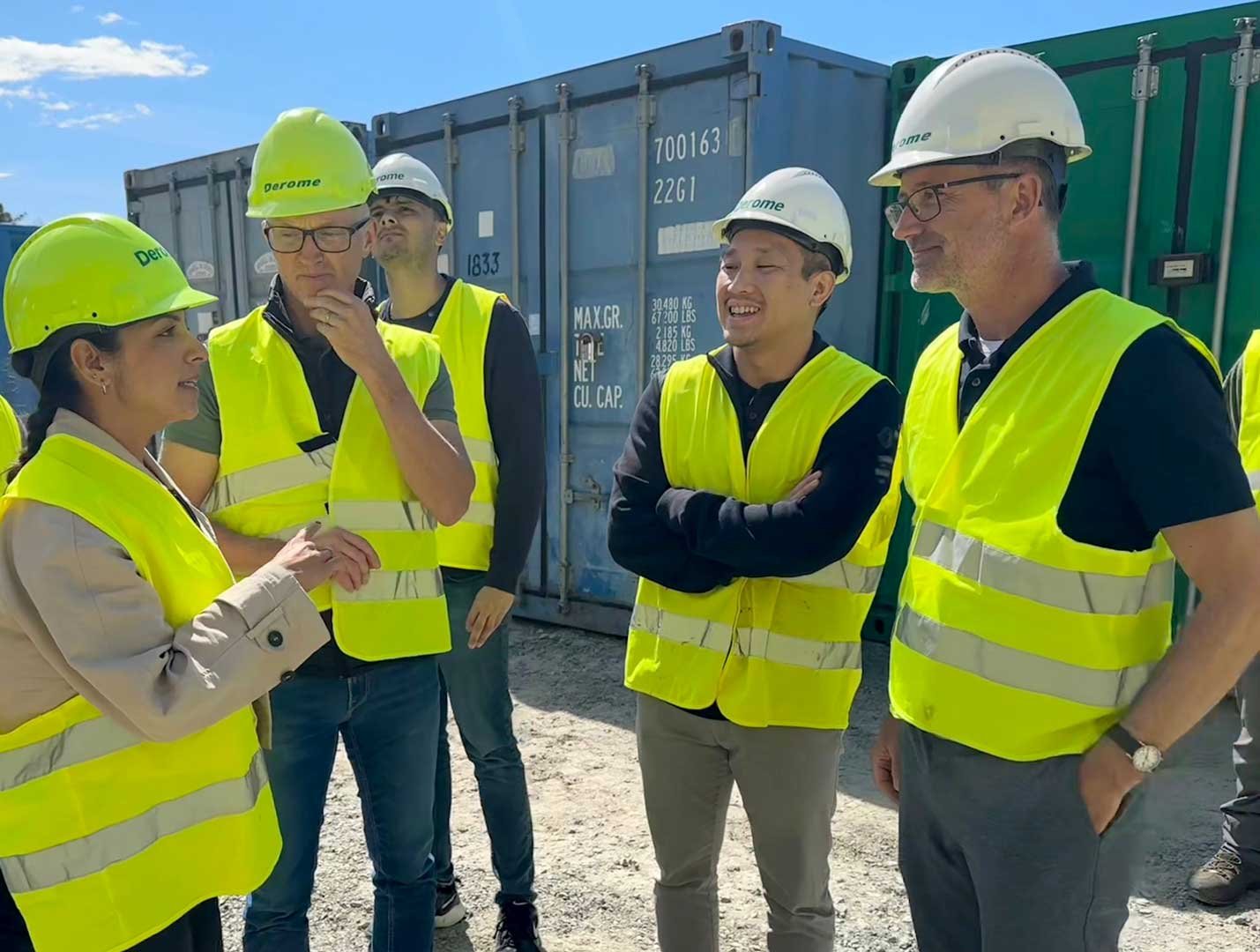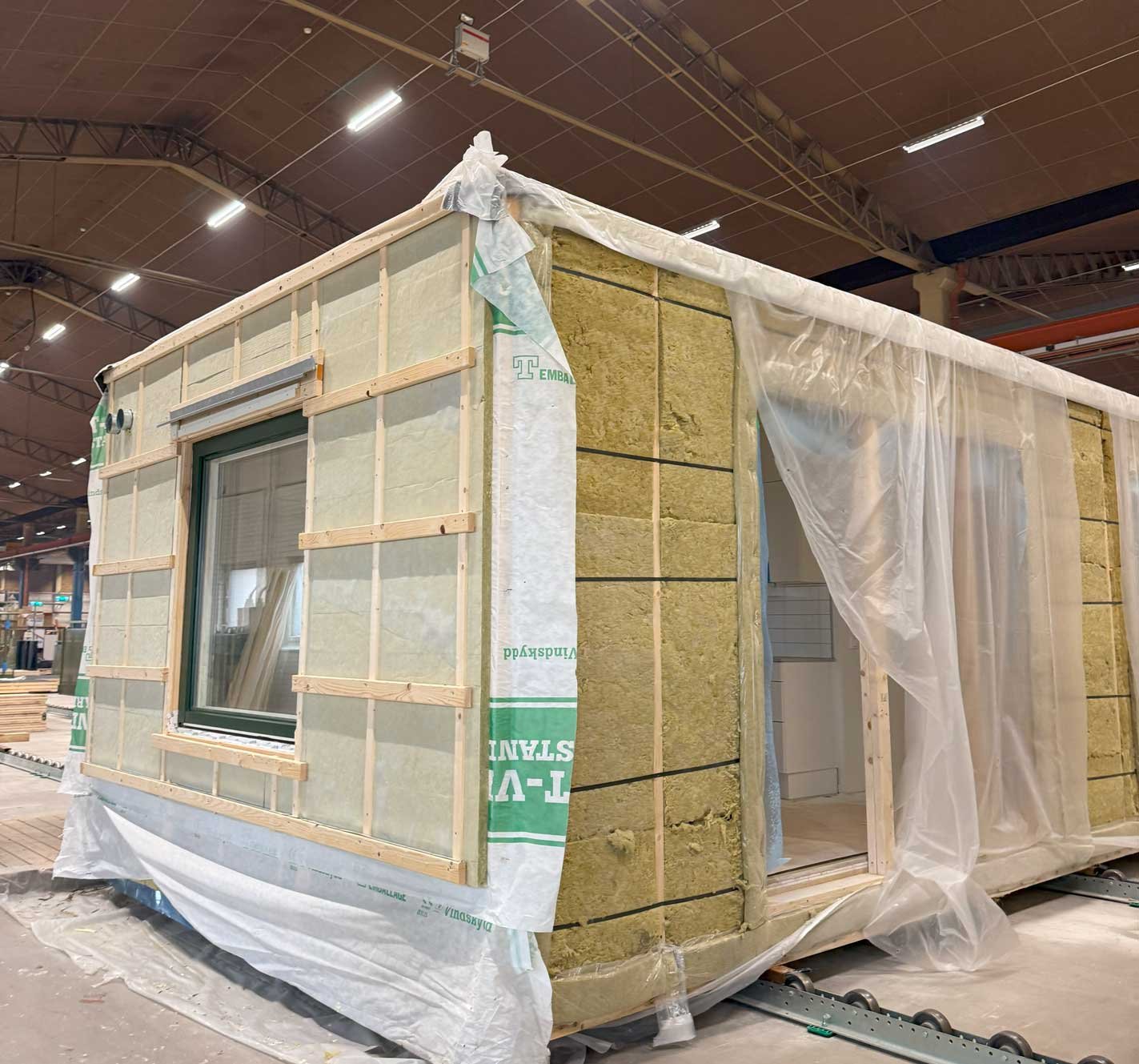De-Risking Innovation in Construction: Lessons from Sweden and Scotland
July 10, 2025
Apoorva Pasricha, Cloud Apartments Chief Operating Officer
Earlier this year, I found myself on the phone with a journalist from Byggvärlden, one of Sweden’s leading construction magazines. We were halfway through a knowledge exchange trip hosted by Terner Labs (a sister organization to Terner Center for Housing Innovation at UC Berkley), and she wanted to chat about the American perspective on the Swedish building industry.
“Sweden is 100 years ahead,” I said, half-joking, but genuinely in awe. She quoted me. I later asked her to change it to “many.” Still, the spirit of that comment holds true.

Cloud Apartments is one of the six companies selected by Terner Labs as a part of the Builders Lab cohort. A core component of the Builders Lab programming is an international knowledge trip to observe and take lessons from countries with a more mature industrialized construction industry than the United States. We visited Sweden (Malmo & Varberg) and Scotland (Glasgow & Edinburgh). Both countries have ecosystems that are integrated across government, industry, and capital. It was inspiring and instructive.
Over 10 days, we toured factories, single- and multifamily housing developments, innovation labs, and project sites. We met with leaders of cross-sector coalitions advancing the industry. We watched forest wood manufactured into panels used in cross-laminate timber (CLT) construction.

Our takeaways from the trip can hardly be summarized into a single post, but the overarching theme holds: Industrialized construction is a de-risked, tested path to building housing more affordably without compromising quality. Sweden and Scotland both have more advanced ecosystems, but they did not appear overnight.
The following lessons are directly applicable to U.S. developers, investors, and policymakers who are exploring modular or offsite construction as a path to building more, building affordably, and building well:
1. Pilots Should Prove Feasibility with a PATH to Savings

One of the most common reasons developers in the U.S. hesitate to pursue modular construction is that the cost savings don’t always show up on the first project. But in Sweden, we heard a different philosophy: a successful pilot doesn’t need to save money upfront, it just needs to work and be cost-neutral. If it does, future projects create the margin.
Derome, a vertically-integrated construction company that cuts its own timber, builds its own factories, and develops its own housing, shared their pilot process with us. When testing a new CLT-based foundation system to reduce embodied carbon, they didn’t measure success by ROI alone. Instead, they asked: 1) Does the innovation work (materials or method)? 2) Is it cost-neutral?
That’s it. If both were true, they would scale it and expect efficiencies over time. In the U.S., we often use pilots to prove cost superiority, a framing that almost guarantees disappointment and stifles long-term innovation.
We’ve seen how this dynamic plays out in early-stage partnerships. One project might not pencil perfectly, but what if the next five do? Pilots should de-risk innovation, and demonstrate a path to cost savings.
2. Factory Success Goes Beyond Automation

We visited seven factories in Sweden and Scotland (e.g. Vida, Derome, Randek), ranging from minimally automated (just construction indoors) to heavily-roboticized lines. These factories output everything from wood-based construction materials to volumetric modules for multifamily development. The level of automation wasn’t what defined a “good” factory. It was:
- Layout designed for throughput
- Predictable pipeline of volume
- Clear floor-level performance metrics
- Employee accountability and ownership
- Integrated quality control with job sites
The glamour of automation often overshadows these fundamentals. Technology helps, but it’s not the baseline for success. Cloud found this to be especially relevant. Our business model is predicated on working with multiple factories who are able to manufacture our product. When we evaluate factories to certify them, automation is not a core component of our criteria. We focus on the elements of the factory that give us confidence in the factory’s ability to be underwritten, deliver a quality product on time, and collaborate.
3. Treat Modular Like an Integrated Strategy
In the U.S., modular often enters the conversation late—once a project is struggling to pencil. That late-stage handoff rarely works. What we saw in Sweden and Scotland was a different approach: roles that span across the value chain from the very beginning.
In Malmo, we toured a climate-focused project led by architect Gustaf Wennerberg. Gustaf wasn’t just designing the building. He was acting as the owner’s representative, evaluating materials, coordinating timelines, and proposing modern construction methods as part of the project’s foundational strategy.
That level of cross-role integration allows modular or panelized construction to be considered at the site selection or entitlement stage, as opposed to a retrofit idea once the project does not pencil.
4. Public Sector Support Seeds Innovation; Private Sector Scales It
Sweden’s leadership in industrialized construction is not accidental. In the 1960s, the Million Homes Program incentivized the factory housing production that still powers offsite building today. In 1995, the country adopted performance-based building codes, giving developers flexibility to innovate beyond prescriptive templates. And in recent years, industry coalitions like LFM-30 have pushed for climate-neutral building, creating new standards for sustainability, performance, and accountability.
In Scotland, Edinburgh Home Demonstrator (EHD), a regional government-industry-academic collaboration to drive affordable, net zero residential construction through factory methods, leverages government-owned land to launch pilot projects in partnership with architects and manufacturers to advance modern methods of construction. Their model shows that when the government becomes the client for innovation, the market is better placed to respond.
The lesson? National and local governments can seed innovation through performance-based regulation, unique financing, or assets that can be leveraged for pilots. Both countries have grappled with how to bring the private sector along. Sweden’s private sector (e.g. Derome, OBOS, MKB, Vida Building Systems) has created widespread adoption by making a strategic cost and sustainability bet on industrialized construction.
5. Financing Models Must Innovate Alongside Products & Services
Another quiet force behind Sweden’s progress is its creative ownership and financing models.
OBOS, one of Sweden’s largest residential developers, operates as a member-owned cooperative. Over 500,000 members contribute to its capital base, allowing OBOS to support prefabricated homebuilding while also securing long-term financing from banks who see the co-op’s scale and staying power as de-risking features.
That model may not translate directly to the U.S., but the idea does: ownership structures that demonstrate long-term value and aggregate demand are more likely to attract capital and more likely to weather the learning curve of new construction methods. This can also further be extrapolated to funding models for early stage companies in the industrialized construction space. Companies innovating in the space require patient capital that is willing to follow the cyclical timeline of the real estate industry.
Offsite Construction is as Old as the Acropolis
I made a quick stop in Greece after the Terner tour and visited the Acropolis. My guide explained that to cut costs, ancient builders transported pre-cut marble blocks originally from Mount Pentelicus and, during later restorations, from quarries in Turkey. Archaeologists have found assembly marks etched into the stones, helping workers fit them together on site like ancient IKEA instructions.
The takeaway? Offsite construction isn’t a new idea. It’s a centuries-old solution to the same challenge we face today: how to build faster, efficiently, and more affordably.
To U.S. developers, investors, and policymakers: There are ways to adapt these learnings to our own construction ecosystem. We have the entrepreneurial network. We have manufacturing capacity. We have land, demand, and capital. What we need are better pilot frameworks. More integrated approaches. Regulation and financial systems that innovate alongside the industry.
Thank you to all the partners for their generosity in hosting us, sharing candid reflections, and inspiring our cohort: Derome, Vida, LFM 30, Built Environment – Smarter Transformation (BE-ST), Edinburgh Home Demonstrator (EHD), Växjö Linnaeus Science Park, OBOS, MKB, Wingardhs, Arkitektbolaget, Södra, James Jones & Sons, and Randek.
Thank you to the Terner Labs team & Professor Jerker Lessing for organizing and leading the trip. You can find their reflections on the trip here and a recording of the July 9, 2025 webinar, “Building Industry Innovation: Insights from Sweden and Scotland” here.
COPYRIGHT © 2025 CLOUD APARTMENTS | ALL RIGHTS RESERVED.
